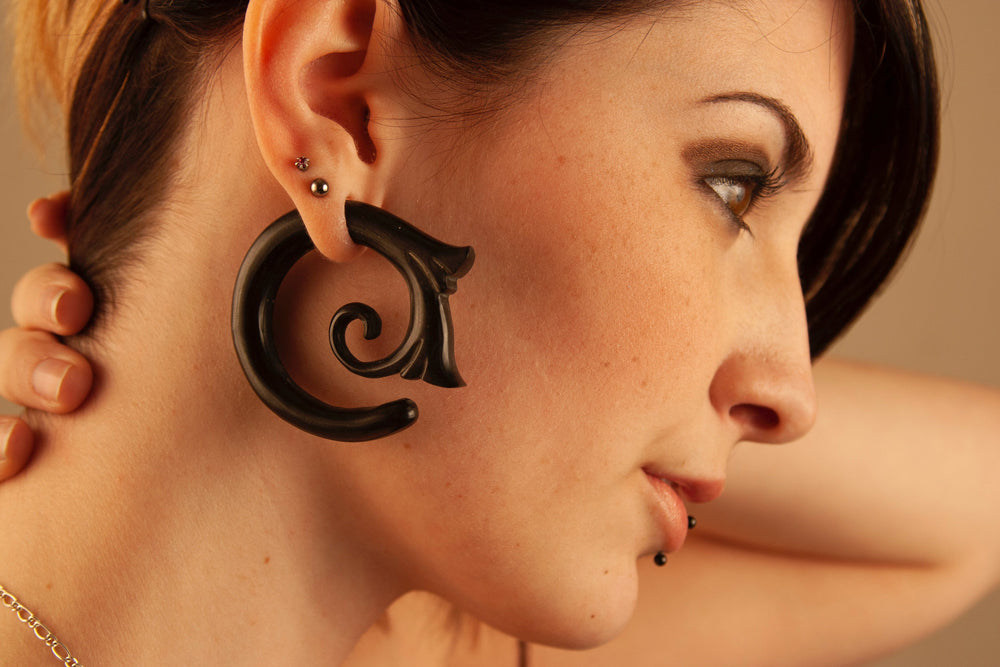So, you got yourself a piercing, got it all healed up, and you’re ready to change the jewelry. You may find that you’re not really certain what you need or perhaps this is all really new to you and you don’t fully understand the lingo. That’s ok, we’re here today to discuss the various shapes and styles that body piercing jewelry comes in and which holes you might want to put it in.
Circular Jewelry
As long as you have the appropriate gauge and size for your piercing, circular jewelry can go in a mind-boggling array of piercings. Nostril, lip, conch, tragus, helix, septum, nipple, navel – all of these can rock a ring comfortably. Circular jewelry comes in a few different styles. The absolute easiest to use are clickers, closure rings, and hinged segment rings. A closure ring simply bends apart sideways, and then is pushed back together after the jewelry is inserted. A clicker has a barbell portion that is attached to the ring and opens and shuts with a “click”. (Hence the name) A segment ring has an attached segment of the ring (Again, hence the name) but when it closes, the segment becomes a seamless part of the ring so you cannot tell that it opens or shuts.

Captive Ring
These are rings that do not open but use light pressure to hold an object within a small space to keep the ring closed. Some use beads (captive bead rings with hematite beads were SUPER big in the 90’s, for all you retro style mavens!), some use charms or tiny discs set with gems. These rings are extremely secure and perfect for people who fear losing ball ends or having jewelry slide out. The catch is that they can be a challenge to insert and remove. (You can find special pliers to aid in this. Remember to be very gentle so you don’t bend the ring out of shape!) Captive rings are a true classic and perfect for those who don’t change their jewelry very often.

Barbells
Barbells are another common jewelry shape, be they straight or curved. Straight barbells are primarily used in industrial and tongue piercings, while short barbells (and their cousin, the flatback labret stud) are often seen in cartilage piercings. Short barbells and flatback labrets are actually ideal cartilage jewelry, especially for fresh piercings, as they minimize the ability of the jewelry to move around in the piercing. This helps the piercing heal faster and with less incidence of the dread irritation bump. There are a few specific piercings that require a curved barbell. The navel, the eyebrow, and the rook will all need a curved barbell for piercing. They may be able to be changed to other styles after healing, depending on you specific anatomy. Belly rings are naturally going to be longer and a larger gauge than an eyebrow ring.

Circular Barbell (Horseshoe)
If you can’t decide between a ring or a barbell for your piercing, circular barbells (AKA: the horseshoe) can be a great compromise. The ends are easily accessible, making them simple to insert and remove. They don’t require special tools and work in a huge range of piercings. Almost any piercing can rock a horseshoe, so long as it is correctly measured. What do navel, tragus, nipple, lip, and nose piercings have in common? They can all rock a horseshoe.

The first step in putting new jewelry in your piercing is knowing what you want. Hopefully now you have the information needed to make an informed decision. And of course, if you have any lingering doubts or questions, feel free to consult your trusted piercer! Happy piercing!






